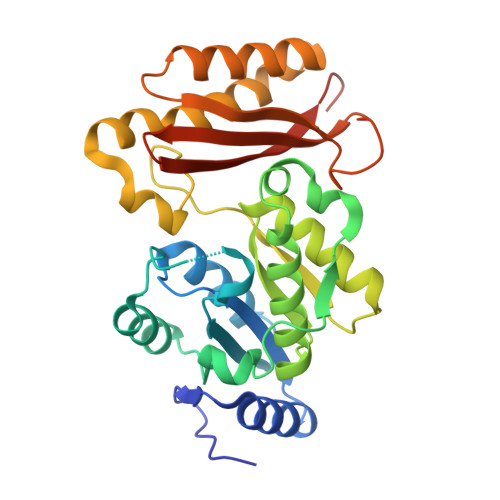Optimization of Inhibitors of Mycobacterium tuberculosis Pantothenate Synthetase Based on Group Efficiency Analysis.
Hung, A.W., Silvestre, H.L., Wen, S., George, G.P., Boland, J., Blundell, T.L., Ciulli, A., Abell, C.(2016) ChemMedChem 11: 38-42
- PubMed: 26486566
- DOI: https://doi.org/10.1002/cmdc.201500414
- Primary Citation of Related Structures:
4MQ6, 4MUE, 4MUF, 4MUG, 4MUH, 4MUI, 4MUJ, 4MUK, 4MUL, 4MUN - PubMed Abstract:
Ligand efficiency has proven to be a valuable concept for optimization of leads in the early stages of drug design. Taking this one step further, group efficiency (GE) evaluates the binding efficiency of each appendage of a molecule, further fine-tuning the drug design process. Here, GE analysis is used to systematically improve the potency of inhibitors of Mycobacterium tuberculosis pantothenate synthetase, an important target in tuberculosis therapy. Binding efficiencies were found to be distributed unevenly within a lead molecule derived using a fragment-based approach. Substitution of the less efficient parts of the molecule allowed systematic development of more potent compounds. This method of dissecting and analyzing different groups within a molecule offers a rational and general way of carrying out lead optimization, with potential broad application within drug discovery.
Organizational Affiliation:
Department of Chemistry, University of Cambridge, Lensfield Rd, Cambridge, CB2 1EW, UK.

















